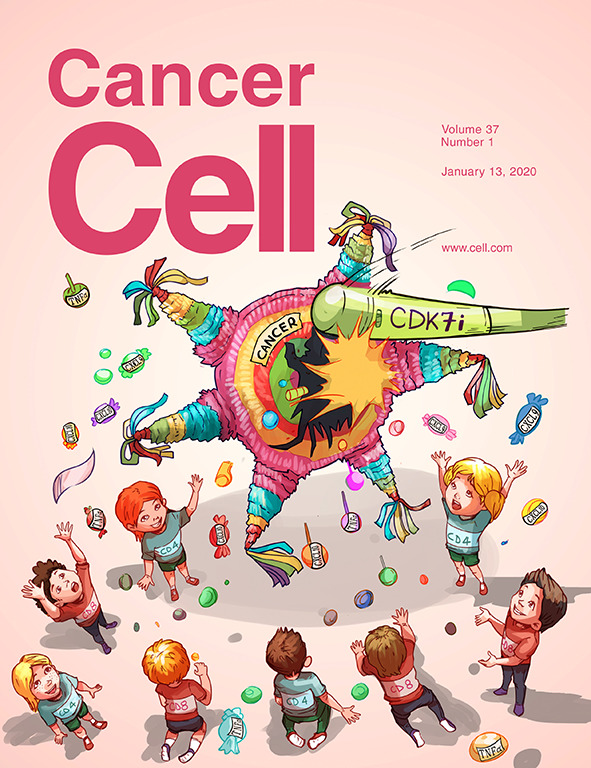空间蛋白质转录组学分析揭示了交界性卵巢肿瘤及其侵袭性进展的分子景观
IF 44.5
1区 医学
Q1 CELL BIOLOGY
引用次数: 0
摘要
上皮浆液性交界性肿瘤(SBT)是一种非侵袭性卵巢肿瘤,可复发为耐药低级别浆液性癌(LGSC)。虽然遗传改变表明有一个共同的起源,但从SBT到LGSC的转变仍然知之甚少。在这里,我们整合了细胞类型分解的空间蛋白质组学和转录组学来阐明从SBT到LGSC的进化及其在基质和肿瘤中的相应转移。这种转变通过具有微乳头状特征的中间阶段发生在上皮间室内,在此期间,LGSC过表达c-Met和几种脑特异性蛋白。在肿瘤微环境中,癌细胞和基质细胞之间的相互联系,以及降解堆积的细胞外基质的酶,表明各种细胞类型之间的功能协作。我们通过整合空间转录组学和蛋白质组学对16个药物靶点进行了功能验证。靶向CDK4/6 (milciclib)和FOLR1 (mirvetuximab)的联合治疗在体内实现了显著的肿瘤减少,代表了一种有前景的LGSC治疗策略。本文章由计算机程序翻译,如有差异,请以英文原文为准。

Spatial proteo-transcriptomic profiling reveals the molecular landscape of borderline ovarian tumors and their invasive progression
Epithelial serous borderline tumors (SBT) are non-invasive neoplastic ovarian lesions that may recur as chemo-resistant low-grade serous cancer (LGSC). While genetic alterations suggest a common origin, the transition from SBT to LGSC remains poorly understood. Here, we integrate cell-type resolved spatial proteomics and transcriptomics to elucidate the evolution from SBT to LGSC and its corresponding metastases in both stroma and tumor. The transition occurs within the epithelial compartment through an intermediary stage with micropapillary features, during which LGSC overexpresses c-Met and several brain-specific proteins. Within the tumor microenvironment, interconnectivity between cancer and stromal cells, along with enzymes degrading a packed extracellular matrix, suggests functional collaboration among various cell types. We functionally validated 16 drug targets identified through integrated spatial transcriptomics and proteomics. Combined treatment targeting CDK4/6 (milciclib) and FOLR1 (mirvetuximab) achieved significant tumor reduction in vivo, representing a promising therapeutic strategy for LGSC.
求助全文
通过发布文献求助,成功后即可免费获取论文全文。
去求助
来源期刊

Cancer Cell
医学-肿瘤学
CiteScore
55.20
自引率
1.20%
发文量
179
审稿时长
4-8 weeks
期刊介绍:
Cancer Cell is a journal that focuses on promoting major advances in cancer research and oncology. The primary criteria for considering manuscripts are as follows:
Major advances: Manuscripts should provide significant advancements in answering important questions related to naturally occurring cancers.
Translational research: The journal welcomes translational research, which involves the application of basic scientific findings to human health and clinical practice.
Clinical investigations: Cancer Cell is interested in publishing clinical investigations that contribute to establishing new paradigms in the treatment, diagnosis, or prevention of cancers.
Insights into cancer biology: The journal values clinical investigations that provide important insights into cancer biology beyond what has been revealed by preclinical studies.
Mechanism-based proof-of-principle studies: Cancer Cell encourages the publication of mechanism-based proof-of-principle clinical studies, which demonstrate the feasibility of a specific therapeutic approach or diagnostic test.
 求助内容:
求助内容: 应助结果提醒方式:
应助结果提醒方式:


